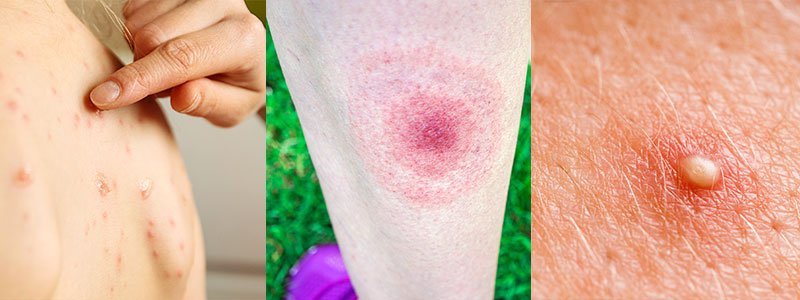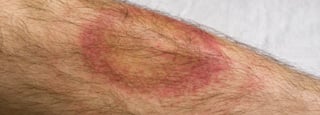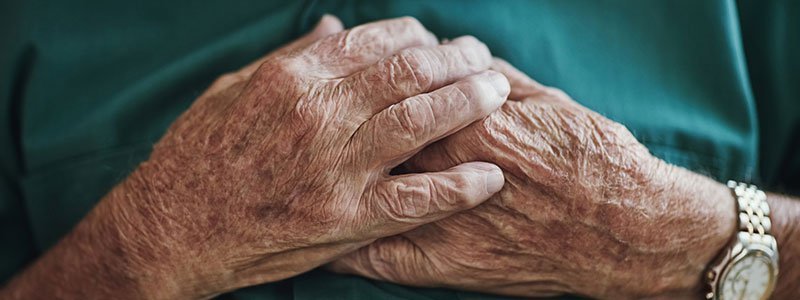Lyme Disease Quiz: Symptoms & Signs
Answers FAQ
Lyme Disease FAQs
Reviewed by );"John P. Cunha, DO, FACOEP on November 1, 2017
Test your Knowledge!
- Lyme disease is contagious. True or False?
- Where are you most likely to contract Lyme disease?
- What is Lyme disease?
- You've found a tick on your leg. Now what?
- Where do ticks carry the Lyme bacterium?
- Where was Lyme disease first identified?
- Lyme disease is reported most often in the southeastern U.S. True or False?
- What are early symptoms and signs of Lyme disease?
- The characteristic Lyme disease rash looks like what?
- Lyme disease rash is called what?
- What are the effects of late-stage Lyme disease?
- How do doctors diagnose Lyme disease?
- Which drug is used to treat early stage Lyme disease?
- How can Lyme disease be prevented?
- Today, Lyme disease may be prevented with a vaccine. True or False?
- Improve your Health I.Q. on Lyme Disease
- Lyme Disease Related Slideshows
- Lyme Disease Related Image Collections

Q:Lyme disease is contagious. True or False?
A:False. Lyme disease is not transmitted from an affected person to someone else. Therefore, Lyme disease is not contagious.

Q:Where are you most likely to contract Lyme disease?
A:Hiking. You are more like to get Lyme disease as a result of hiking. This is because ticks generally cling to plants near the ground in brushy, wooded, or grassy places. The edges of woodlands and leaf litter are high-risk areas. The ticks, which cannot jump or fly, climb onto animals and people who brush against plants.

Q:What is Lyme disease?
A:Lyme disease is a bacterial illness. It is caused by a bacterium called a "spirochete."

Q:You've found a tick on your leg. Now what?
A:If you find a tick on your body, remove the tick with fine-point tweezers. The longer a tick remains attached, the greater the chance it will be able to spread a disease-causing germ. Therefore, any attached tick should be removed as soon as possible. The tick should not be squeezed or twisted but grasped close to the skin and pulled straight out with steady pressure.

Q:Where do ticks carry the Lyme bacterium?
A:Ticks carry the Lyme bacterium in their stomachs.

Q:Where was Lyme disease first identified?
A:Lyme disease was first identified in Lyme, Connecticut. Lyme disease only became apparent in 1975 when mothers of a group of children who lived near each other in Lyme, Connecticut, made researchers aware that their children had all been diagnosed with rheumatoid arthritis. This unusual grouping of illness that appeared "rheumatoid" eventually led researchers to the identification of the bacterial cause of the children's condition, what was then called "Lyme disease" in 1982.

Q:Lyme disease is reported most often in the southeastern U.S. True or False?
A:False. Lyme disease has been reported most often in the northeastern United States, but it has been reported in all 50 states, as well as China, Europe, Japan, Australia, and parts of the former Soviet Union. In certain areas of New York, where Lyme disease is common, over half of the ticks are infected.

Q:What are early symptoms and signs of Lyme disease?
A:Early symptoms and signs of Lyme disease generally include expanding reddish rash and flu-like symptoms. The rash is caused as the bacteria spread in the skin away from the initial tick bite.

Q:The characteristic Lyme disease rash looks like what?
A:The characteristic Lyme disease rash looks like a bull's eye. In the early phase of the illness, within days to weeks of the tick bite, the skin around the bite develops an expanding ring of unraised redness. There may be an outer ring of brighter redness and a central area of clearing, leading to a "bull's-eye" appearance.

Q:Lyme disease rash is called what?
A:The Lyme disease rash is called erythema migrans. It is the classic initial rash of Lyme disease and is formerly called erythema chronicum migrans.

Q:What are the effects of late-stage Lyme disease?
A:The effects of late-stage Lyme disease can include heart failure, Bell's palsy and arthritis. The later phases of Lyme disease can affect the heart, causing inflammation of the heart muscle. This can result in abnormal heart rhythms and heart failure. The nervous system can develop facial muscle paralysis (Bell's palsy), abnormal sensation due to disease of peripheral nerves (peripheral neuropathy), meningitis, and confusion. Inflammation in the joints (arthritis) begins with swelling, stiffness, and pain, and particularly affects one knee.

Q:How do doctors diagnose Lyme disease?
A: In early Lyme disease, doctors can sometimes make a diagnosis simply by finding the classic red rash. Currently, the confirmatory test that is most reliable is the Western Blot assay antibody test.

Q:Which drug is used to treat early stage Lyme disease?
A:Doxycycline (Vibramycin), Amoxicillin (Amoxil) and Cefuroxime axetil (Ceftin) are dugs that are used to treat Lyme disease. Early illness is usually treated with medicines taken by mouth.

Q:How can Lyme disease be prevented?
A:Lyme disease may be prevented in the following ways: Spray insect repellant containing DEET onto exposed skin. Wear long pants tucked into boots and long sleeves. Bathe the skin and scalp and wash clothing upon returning home. Because Lyme disease is transmitted by ticks attaching to the body, it is important to use tick-bite avoidance techniques when visiting known tick areas. Spraying insect repellant containing DEET onto exposed skin can help. Wearing long pants tucked into boots and long sleeves can protect the skin. Clothing, children, and pets should be examined for ticks. Ticks can be removed gently with tweezers and saved in a jar for later identification. Bathing the skin and scalp and washing clothing upon returning home might prevent the bite and transmission of the disease.

Q:Today, Lyme disease may be prevented with a vaccine. True or False?
A:False. Vaccines were formerly on the market; however, as of Feb. 25, 2002, the manufacturer announced that the LYMErix Lyme disease vaccine will no longer be commercially available.
&Copy; 1996-2022 MedicineNet, Inc. All rights reserved.Source quiz on MedicineNet
Improve your Health I.Q. on Lyme Disease
Lyme Disease Related Slideshows
Lyme Disease Related Image Collections
- Bites and Infestations
- Scales, Plaques, and Eruptions
- Bacterial Skin Diseases
- See All Image Collections


